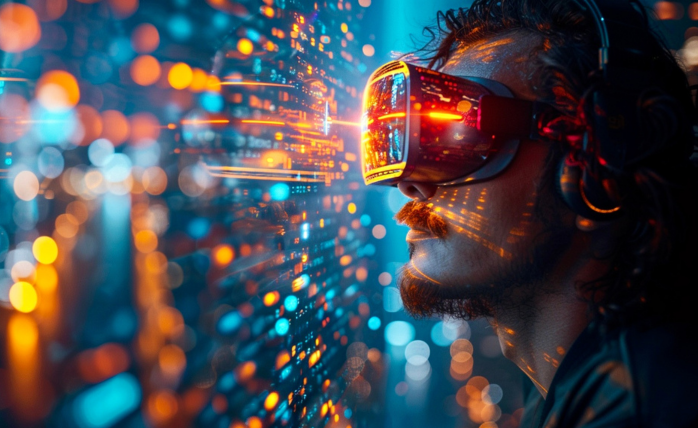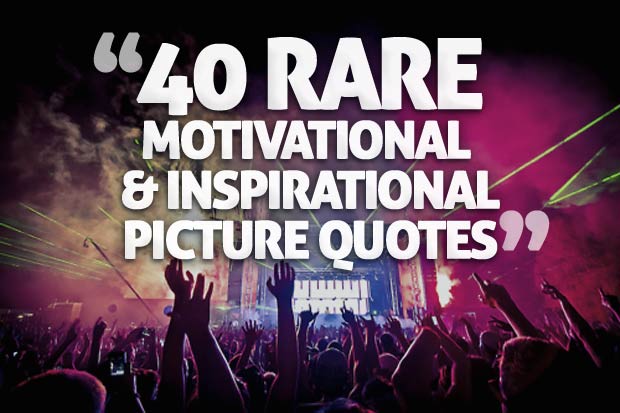Tech + Humanity Integration
Why Personal Brands That Feel Real Are Winning in the AI Age
One’s digital persona allows them to brand themselves however they want, but the freedom to self-express digitally is no longer only about visibility

How individuals configure their online presence in today’s world reflects their self-perception and self-esteem, as the internet is filled with fragmented attention and ever-changing identities. Algorithms might determine a person’s visibility, but the things that truly capture attention run far deeper: connection, coherence, and emotional authenticity.
The introduction of artificial intelligence is not merely a technological advancement anymore; it symbolizes a deeper shift in psychology relating to impression formation, trust building, and relationship maintenance in online spaces.
One’s digital persona allows them to brand themselves however they want, but the freedom to self-express digitally is no longer only about visibility; rather, it is about leaving an emotional impact that will allow one to be understood and accepted.
Personal Brands in the AI Era
We, as humans, are beings that flourish on stories. We strive for identity and belongingness, even if it is through a screen. Weaving one’s own brand in the current era means cultivating digital landscapes that mirror our most cherished beliefs and values.
Content is not what the audience only follows; rather, followers chase energy. Following assurance, clarity, and consistency all stem from the safety that a well-employed identity bestows.
This is where AI makes things easier and harder at the same time. AI tools can amplify a message, but they can also tempt one to mask the so-called “inner work” through a lack of focus and blank direction.
The red flag first strikes during the fast-accelerating age of branding with AI; leading and knowing when to take charge becomes the challenge.
As this presence is being built, there are many who now silently lean on privacy features, opting for private browsing, stronger safe search settings, or utilizing encrypted email. In the earliest stages of building a digital identity, creating in private browsing mode, so to speak, is often useful.
That’s why resources such as a popular cyber blog exist—not only to provide safety, but to give creators the room they need to refine and experiment with their voice without overexposure.
Why Every Digital Presence Is an Emotional Asset
Your presence online is more than a portfolio; it is an emotional imprint. The way you tweet, the design of your personal website, how you respond to comments – all of these actions convey something about you and influence others.
Investors following BGR stock or founder-led emerging markets typically look beyond hard competencies and consider soft ones, like emotional intelligence, which is often demonstrated through online engagements.
Having an accurate and calm digital footprint provides much more than recognition; it provides comfort. It says: You are anchored. You are thoughtful. You are anchored. You have done the inner work.
What Makes a Brand Psychologically Resonant?
- Coherence: Is it clear emotionally, from where your content is coming from?
- Vulnerability: Are you prepared to show the journey, not just the polished outcomes?
- Boundaries: Do you respect and observe your own pace and limits while on the internet?
- Responsiveness: Is it possible for you to engage without over-participating or explaining too much?
How AI Relates to Emotional Branding While Building a Personal Brand
AI in branding is not only about branding; it is also about attunement. Audience sentiment tools, tone testers, and formatting suggestions are emotional feedback loop devices. The real question is: do you know yourself well enough to navigate the data and determine what is aligned to you?
You may mirror trends and insights, however, only you can mirror your truth. You may be able to generate content, however, only you can generate trust. Predictive analytics and trend analysis are useful when there is a clear message and guidelines to work within, and these tools become powerful.
Digital Emotional Boundaries and Safety
The emotional toll of creating and sharing content. Emotional visibility sits with scrutiny for both a personal and corporate brand. Thus, online emotional security is paramount. Turning on private browsing mode or adjusting the safe search setting is not mere tech-savviness – it is self-awareness.
Using encrypted email can help safeguard your energy by keeping client work, feedback, or collaboration gloves work no matter what cap is donned. The emotional labor is part of digital creation and so, boundaries need to be part of your toolkit.
Branding as Mirror of Inner Clarity
The purpose of digital personal branding is not developing an empire but building a mirror. It mirrors how well you know yourself, how freely you are going to offer yourself, and how responsibly you participate.
Even in areas of finance or tech where professionals might be tracking BGR stock or tech startups, personal brands built with emotional alignment should not be underestimated. They speak insight and presence while ensuring humility, evoking emotions within people instead.
Protecting your voice, data, and your limits is more than optional; it is fundamental. The presence of digital care is a manifestation and reflection of self-worth. Those who utilize private browsing, encrypted channels, and perform audits on their content do so for their peace and to shield their work.
Peace is built where trust flourishes, and trust flourishes when you show actions that indicate respect to your voice by defending it.
Final Thoughts
For businesses, solo-preneurs, and influencers in an overly saturated noisy digital ecosystem, resonance is increasingly proving to be more valuable than reach.
Personalized brands that combine inner alignment with intelligent AI solutions give more than just exposure; they provide insight which, in fact, is unforgettable.
Allow your brand to be visibly a flowing manifestation of your values, instead of being a reaction to amoral algorithms. Learn to craft a personal brand that caters to what sparks joy, what boundaries fuel you, and what kind of legacy you wish to imprint.
The expectation is no longer perfection; it is authenticity, resilience, and true impact.
Tech
What’s in a Name? How to Get Your Domain Right
Discover actionable steps to select a memorable and brandable domain name. Use our checklist to make a confident choice and build a strong online identity for your business.

Your domain name is the foundation of your entire brand online. It’s the first thing people see, the first thing they type, and the first judgment they make about your business. (more…)
Tech Start Ups
Your Startup’s Greatest Risk May Be A Click, Not A Competitor
What they don’t expect is how one click, a single email link, a quick download, an innocent attachment, could take everything they’ve built and put it on the line.

Most entrepreneurs step into the startup world prepared to fight competitors, woo investors, and navigate unpredictable markets. They expect the sleepless nights and tough decisions. (more…)
Entrepreneurs
9 Ways Augmented Reality Gives Your Business a Competitive Edge
By embracing AR technology, companies can unlock new opportunities for growth, innovation, and success

Leveraging Augmented Reality for Business Advancement: Exploring Applications
In the ever-evolving landscape of business innovation, Augmented Reality in business emerges as a transformative force, reshaping traditional paradigms and unlocking new opportunities for growth and advancement.
Through a comprehensive examination of AR’s capabilities, applications, and business benefits, this article serves as a roadmap for enterprises seeking to harness the full potential of augmented reality to propel their success in the digital age.
UNI.Agency as a forefront developmental agency tailors unmatched digital products and immersive experiences. They help companies outperform their competitors and customers’ expectations. And now, there is time to delve deep into the AR realm.
Gaining Insight into Augmented Reality
From revolutionizing customer experiences to optimizing operational efficiency, AR in retail is poised to drive significant advancements in how businesses operate and engage with their stakeholders.
Augmented Reality (AR) seamlessly integrates digital information and virtual objects into the real-world environment, offering users an immersive and interactive experience through devices like smartphones or AR glasses.
It revolutionizes various industries, from entertainment to healthcare, by enhancing perception and creating innovative opportunities for engagement and exploration in the digital era. AR not only enriches our understanding of reality but also opens up new possibilities for creativity, communication, and problem-solving, making it a powerful tool for businesses seeking to enhance customer experiences and streamline operations in an increasingly digital world.
Differentiating Augmented Reality and Virtual Reality
Augmented Reality (AR) overlays digital elements onto the real world, enhancing the user’s perception of their environment. Virtual Reality (VR), however, immerses users in entirely virtual environments, blocking out the real world. There are some core differences between these two technologies in gear and display approaches:
- AR enriches reality with digital information, while VR creates entirely immersive virtual experiences.
- AR typically requires less specialized hardware, like smartphones or AR glasses, while VR often involves dedicated headsets.
- AR is commonly used for enhancing real-world experiences, such as in gaming, retail, and navigation, encouraging augmented reality shopping. Whereas VR is primarily employed for immersive simulations, training, and entertainment in fully virtual environments.
The Influence of AR on the Customer Experience Journey
As of 2024, Augmented Reality (AR) has evolved into an indispensable tool across various sectors, offering immersive and interactive experiences that seamlessly blend digital elements with the real world.
Stimulating Interest
Augmented Reality (AR) captivates customers by offering visually engaging experiences that spark curiosity and intrigue, enticing them to explore products or services further.
AR’s ability to overlay digital content onto the real world creates an immersive and attention-grabbing experience, drawing customers in and igniting their interest.
Educating and Empowering Users
AR in business empowers users by providing interactive and informative experiences that educate them about products, services, or concepts in a visually compelling manner.
Through AR, customers can interact with virtual models, animations, or informational overlays, gaining a deeper understanding of the features, benefits, or use cases of the offerings.
Exploring Further Depths
AR encourages customers to delve deeper into products or services by offering immersive and interactive experiences that go beyond traditional marketing materials.
By allowing users to explore virtual representations of products in real-world contexts, AR in retail provides a unique opportunity for customers to visualize how offerings fit into their lives, fostering deeper engagement and understanding.
Business Benefits of Augmented Reality
Businesses utilize AR for diverse applications, including product visualization, virtual try-ons, and enhanced customer engagement. In education, AR transforms learning experiences by providing interactive simulations and visualizations.
Additionally, AR has become integral to industries such as healthcare, where it facilitates surgical training and patient education. With advancements in AR technology and widespread adoption, it continues to shape how we perceive and interact with our environment, ushering in a new era of innovation and connectivity.
Let’s look at why AR has become so indispensable as a business tool nowadays.
Revolutionizing Training Methods
AR in business transforms training by offering immersive, interactive simulations that replicate real-world scenarios, enhancing employee learning and skill development.
It’s lucrative for hands-on training experiences. Since there’s no need for physical equipment or environments, reducing costs and logistical constraints while improving knowledge retention and performance.
Boosting Productivity Levels
Augmented Reality in business boosts productivity by providing real-time access to information and guidance, allowing employees to complete tasks more efficiently and accurately.
Through AR-powered tools and applications, workers can streamline workflows, troubleshoot issues, and collaborate effectively, resulting in increased output and operational efficiency.
Implementing Dynamic Marketing Approaches
AR enables businesses to implement dynamic marketing strategies that captivate and engage audiences in unique ways.
By integrating AR into marketing campaigns, companies can create interactive experiences that drive brand awareness, customer engagement, and sales conversions, setting themselves apart in a crowded marketplace.
Fostering Product Development
Augmented reality and marketing foster innovation in product development by facilitating virtual prototyping, design iterations, and collaborative decision-making.
With AR, teams can visualize and test product concepts in 3D, gather feedback from stakeholders, and make informed design decisions faster, leading to faster time-to-market and more successful product launches.
Creating Tailored Customer Experiences
AR creates personalized customer experiences by allowing users to interact with products and services in customized ways.
Through AR-enhanced applications and experiences, businesses can tailor content, recommendations, and promotions to individual preferences and behaviors, enhancing customer satisfaction and loyalty.
Amplifying Brand Recognition
Augmented Reality shopping amplifies brand recognition by providing memorable and shareable experiences that leave a lasting impression on customers.
By incorporating AR into branding initiatives, companies can create immersive brand experiences that spark conversations, increase social media engagement, and strengthen brand loyalty, ultimately driving business growth and success.
Final Thoughts
In conclusion, Augmented Reality in business stands as a transformative force, offering a multitude of benefits across various aspects of operations. From revolutionizing training methods to boosting productivity levels, AR empowers businesses to thrive in an increasingly competitive environment.
By embracing AR technology, companies can unlock new opportunities for growth, innovation, and success, while delivering immersive and engaging experiences that resonate with customers and stakeholders alike.
As AR continues to evolve and integrate into everyday business practices, Uni will incorporate the best practices to promote business advancement and drive meaningful change for the clients. We’re to shape the future of commerce to your benefit.
Crypto
How Entrepreneurs Are Revolutionizing Industries With Blockchain
Blockchain technology has become a revolutionary force in the new digital age

Blockchain technology has become a revolutionary force in the new digital age with its decentralized nature, immutability, and enhanced security. It offers a vast sea of possibilities for entrepreneurs across various industries. (more…)
-

 Personal Development4 weeks ago
Personal Development4 weeks agoThis Silent Habit Might Be Sabotaging Your Career
-

 Business3 weeks ago
Business3 weeks agoWhy Your E-Commerce Fulfilment Is Probably Broken (And How to Fix It)
-

 Shift Your Mindset3 weeks ago
Shift Your Mindset3 weeks ago11 E’s That Define Every Great Leader And Why Most People Miss Them
-

 Did You Know2 weeks ago
Did You Know2 weeks agoThe Success Patterns You Inherited (And Didn’t Notice)
-

 Business3 weeks ago
Business3 weeks agoThe Hidden Money Pit in Your Operations (and How to Use It)
-

 Entrepreneurs2 weeks ago
Entrepreneurs2 weeks agoThe Essential Skills Every Entrepreneur Needs In 2026
-

 Change Your Mindset1 week ago
Change Your Mindset1 week agoHow to Turn Your Mind Into Your Greatest Asset (Instead of Your Enemy)
-

 Change Your Mindset6 days ago
Change Your Mindset6 days agoThe Silent Skill That Makes People Respect You Instantly














